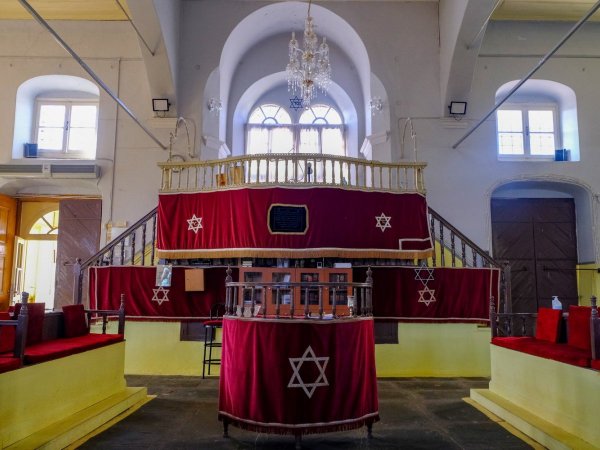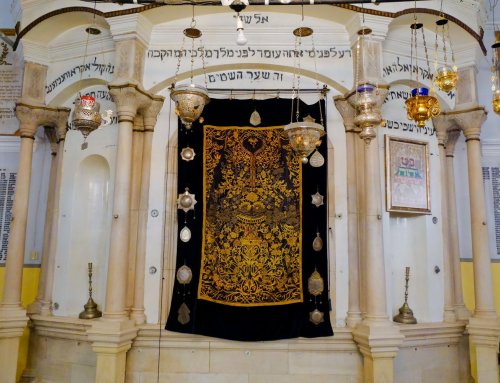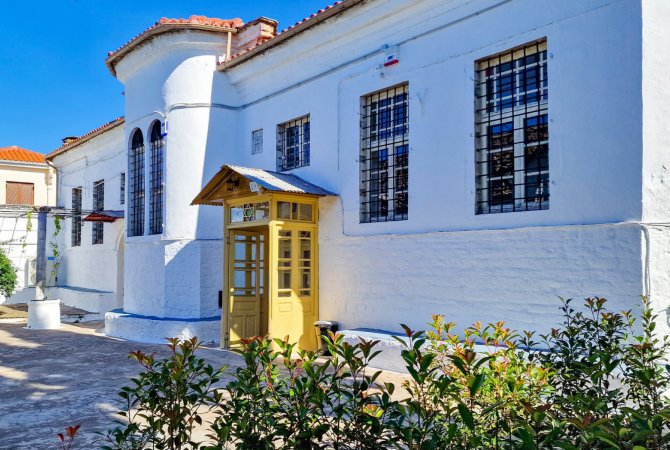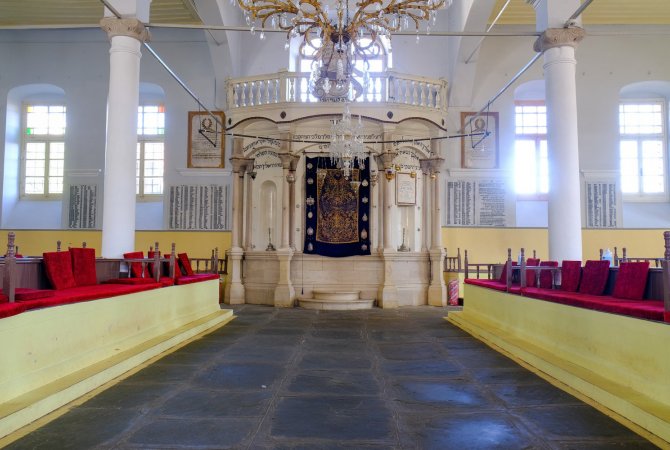The Jewish Community of Ioannina
The Jewish Community
of Ioannina
The Jewish community of Ioannina has always been the indisputable center of Romaniote tradition. In the 8th and 9th century CE, Ioannina began to develop from a small lakeside hamlet to an urban center, which attracted Jews, among others, probably from nearby locations. Life became difficult for a long time, as the area was repeatedly invaded by foreign armies; at the same time, due mostly to domestic issues, the policies of Byzantine emperors towards the Jews fluctuated. Occasionally, detrimental imperial decrees were issued, although they only had a temporary effect. The earliest historic mention of the presence of Jewish residents in the city of Ioannina dates from the early 14th century, during the reign of Andronikos II Palaeologus, when two chrysobulls were issued under his name.




The history of Jewish community
The first dates from 1319 and grants a number of rights to the Jews of the city while stating that they should enjoy “freedom and security from any threat”. The second chrysobull (1321), confirms the existence of permanent Jewish residents in the city, as it promises them protection by the city. It seems to make a distinction between old residents, who enjoyed ancient privileges and were obliged to serve the bishop of Ioannina, and new arrivals, who lived in the city under a new status. It also contains a special mention of three members of the community who appear in the document as “the children of [Rabbis] Lamer, David and Shamaria (or Shemaria)”.
From October 1430, Ioannina belonged to the Ottoman Empire, within which Jews, as non-Muslim subjects, acquired some degree of autonomy. They could freely practice their religion and had administrative autonomy in all intra-community affairs, while enjoying some commercial and occupational privileges. After the arrival of Sephardic Jews in the Empire, at the end of the 15th century, many small Romaniote communities were assimilated by the newcomers; but this was not so for the Romaniote communities of Epirus (Arta, Preveza, Ioannina), where the Romaniote element prevailed until World War II.
The Jewish community of Ioannina saw its heyday in the early days of the 19th century when the city was under the authority of Ali Pasha (1788-1822). Many members of the community worked in administration offices, trade flourished and manufacturing was promoted. The Jewish population increased in number, as did the city’s population in general, and the habitation was also expanded to the area outside of the city’s fortification. The Romaniote Jews of Ioannina created what is possibly the most significant community of Greek-speaking Jews in Greece, and reached notable levels of cultural and financial development. The Jews of Ioannina mostly lived in the old neighborhood within the fortress walls, in the Megali Rouga (Big Street), next to the fortress (later renamed after Max Nordau and now known as Yossef Eliya Street) in Koundouriotou Street and the lanes leading to it, and in Leivadioti Street, which is now known as Soutsou Street.
The fate of this ancient community was sealed on the snowy day of March 25th, 1944, when the 1,870 Jews of the city were deported to Auschwitz. Ninety-two percent of the Romaniote Jews were exterminated in Nazi concentration camps. After the end of World War II, the Jewish community of Ioannina numbered a mere 181 members. Many of the survivors emigrated to the USA and Israel, but still maintain contact with their home city. Today there are fifty Jews left in Ioannina, though many live in Athens. Romaniote Jews, whose ancestral home is in Ioannina, still maintain links with their past and keep alive the awareness of their unique heritage.
The Synagogue

The Synagogue is the center of the Jewish community and a place of communal prayer and study. Synagogue architecture obeyed certain religious dictates, called the halahot, but was also influenced by architectural traditions in the local community. There are two main types of synagogues in Greece, the Romaniote and the Sephardic, and they differ in the way certain basic features are arranged. Both synagogues of Ioannina, the Old Synagogue (Kahal Kadosh Yashan) and the New Synagogue (Kahal Kadosh Hadash) that was built by Jews from Italy and Sicily who settled in Ioannina in the 16th century, were reconstructed in accordance with the Romaniote type, but with visible Byzantine and Romanesque influence.
The Old Synagogue (Kahal Kadosh Yashan) in the Jewish quarter within the castle walls with its several building phases which were mostly carried out in 1829, gave the synagogue its present form. There is a fountain in the courtyard and a permanent structure for the sukkah, the Sukkoth hut for the feast of booths (tabernacles). The entrance (W) to the spacious ground floor was intended exclusively for men. Women reach the mehitzah, a balcony for women via a flight of outdoor steps on the north wall. Four pillars joined to one another by arches delineate the square space in the centre of the main hall. The two most fundamental features in any synagogue are the ehal, a niche in the east wall where the sacred books of the Torah are kept (in the Old Synagogue of Ioannina it is integrated into a marble superstruction) and on the west wall the raised bima (pulpit) from where the Torah is read. There is also a floor-level tevah, or book stand directly opposite the ehal. The Synagogues of Ioannina also had a special feature in the form of a small building, known as the minyan, next to the main Synagogue and used as auxiliary space. Religious observance has two different sets of rites and customs or minhagim, in Greece; the Romaniote and the Sephardic. They share the same language (Hebrew), but differ in local linguistic traits and in some finer points of worship, mainly in the Synagogue. Romaniote services are mostly in the Greek-Hebrew form of vernacular Greek. Even to this day the few remaining Romaniote Jews in Greece, especially in Ioannina, use the form based on the Mahzor Romania and the Minhag Bene Roma, the Italian rite. Romaniote synagogue liturgy has its own peculiarities for each feast day. Services on important feast days, such as Rosh Hashanah and Pessah, include hymns, piyyutim (liturgical poems), and songs in Greek-Hebrew are added to the synagogal practice.

The Jewish cemetery
The Jewish cemetery of Ioannina dates at least from the 19th century. An integral part of its funerary monuments is a number of tombstones and their inscriptions which seem to have been transferred there from an older cemetery, probably in the area where the Zosimaia School is now. The extensive cemetery area, which has been officially declared as a “modern and contemporary monument under protection” by the Greek Archaeological Services, contains a multitude of funerary monuments, most of which date from the early 19th century. There is, however, a cluster of 20-25 graves, near the southern wall of the cemetery, with common characteristics. Two of those bear the earliest inscriptions of the cemetery, dating from the 15th century; one is the tombstone of Rabbi Aaron Mattathia HaLevi, who died in the month of Elul on the year 5186 (i.e. August 1426) and of Rabbi Mattathia Yoseph HaLevi, who died during the new moon of the month Cheshvan, in the year 5199 (October 1438). These inscriptions confirm beyond doubt that the Jewish community of Ioannina had an established presence and activity in the city, at least as early as the late Byzantine era.
© The Jewish Museum of Greece, 2023

For information on the Mass, please send us an email
The Synagogue is located inside the Castle (15 Ioustinianou Str.)








